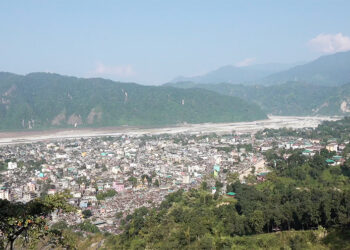
For generations, people in eastern Bhutan have relied on maize as their main crop and staple food. But that trend is slowly changing. Farmers are now cultivating other cash crops. In Sangkhama village in Monggar, some farmers are now turning to pineapples as a major source of income.
58-year-old Ugyen Wangdi from Sangkama in Jurme Gewog is harvesting pineapple from his one-acre farm.
In the past, land was usually filled with maize around this time of the year. But now, it is rows of pineapples.
“People do not consume maize that much. It is mostly rice and maize is used just as a mixture. Growing maize is tedious and has limited income. So, growing fruits such as oranges, pineapples and dragon fruits has proven to generate good income. It is time to change the crop pattern.”
He said pineapple farming initially began on a trial basis and was later expanded.
He added that growing pineapple is much easier compared to other crops, especially on slope and where there is shortage of manpower.
Ugyen’s son Pema Wangchuk, helps him sell the fruit in nearby towns.
“Usually, we produce three to four tonnes of pineapples. Last year, we faced market problem so could not sell about two tonnes of pineapples. Now, I bought a bolero pickup truck for marketing purpose.”
Ugyen Wangdi said, “Initially, our plan was to supply to food processing units but we learned that they already have contracts to get pineapples. So, we could not do it. Now, we sell in Gyalposhing and Monggar towns. Now that people have tasted the produce, sales are much easier. We charge Nu 100 for bigger ones and Nu 60-70 for smaller ones.”
This year, they are expecting to earn over Nu 100,000 just from pineapples.
Furthermore, they are exploring high-value crops and fruits to substitute maize on their seven-acre land.
Their story reflects a growing shift in farming, driven by better income and changing market demands.
Namgay Wangchuk, Monggar
Edited by Tshering Zam








